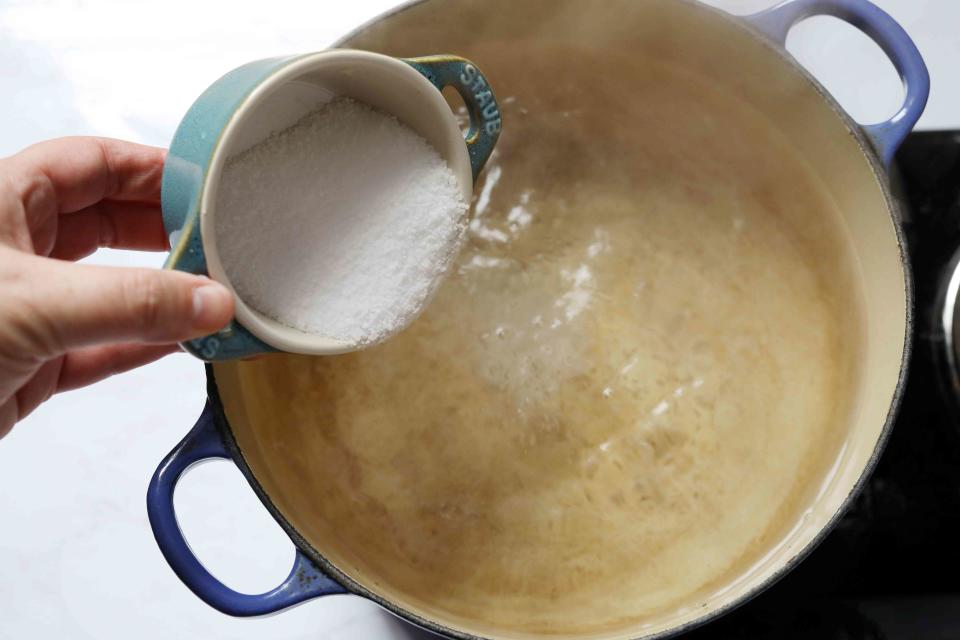How To Salt Pasta Water The Right Way
Chances are good you’re under-seasoning.

Rachel Johnson/Southern Living
Maybe the idea of salting your pasta water is new to you. Or perhaps you’ve heard that pasta water has to be "as salty as the ocean" to properly season your noodles—and you’re wondering what, exactly, that means. Here’s how to salt pasta water in order to yield perfectly seasoned pasta every time.
Do You Have to Salt Pasta Water?
In short: yes. You’d never cook pasta sauce (or nearly anything else) without properly seasoning it, so why would you skip your only chance to salt your pasta? Even if your sauce is properly seasoned, your dish will taste flat when it’s added to unseasoned noodles.
Boiling pasta in water with the right salinity will make the entire bowl of penne (or spaghetti, pappardelle, or whatever other shape of noodle you’re working with) pair harmoniously with a well-seasoned sauce.
How Much Salt Should You Use?
Chances are good that you’re not using enough salt. A quick sprinkle is simply insufficient. So how much is enough?
Just like the longstanding debate over how to make the best tomato sauce, there are endless expert opinions on just how much salt is enough. And while you may have heard that it should be "as salty as the ocean," that isn’t a helpful comparison. Not only is it imprecise, but actually salting your water until it tastes like the ocean would be total overkill. (Who wants to eat briny bucatini?)
To settle the debate, we looked to the godmother of Italian cooking in America, Marcella Hazan. In her classic cookbook, The Essentials of Classic Italian Cooking, she recommends: "For every pound of pasta, put in no less than 1 ½ tablespoons of salt, more if the sauce is very mild and under-salted.”
That amount is for regular kosher salt like Diamond Crystal, not sea salt, which is more potent. (If all you have at home is fine sea salt, use a slightly rounded tablespoon instead of 1 ½ tablespoon of kosher salt.)
If getting out your set of teaspoons every time you make pasta sounds like an annoying extra step, measure the salt out in the palm of your hand, and note what that amount looks like. After a few times, you should be able to eyeball it.
Isn't That a Lot of Salt?
While a palmful of salt may look like a lot, keep in mind that you’ll only actually ingest a small fraction of that amount. That’s because when you add salt to the water, it will get dissolved into the liquid. The pasta will only absorb a tiny amount of the water as it cooks, which means it will only absorb a small quantity of salt, too.
When Should You Salt the Water?
Hazan recommends adding the salt when the water comes to a boil. Then, she advises, “wait until the water returns to a full, rolling boil before putting in the pasta."
After that, all that’s left is to set the timer, get the colander ready, and count down the minutes until you can dig in to your perfect bowl of pasta.
:
For more Southern Living news, make sure to sign up for our newsletter!
Read the original article on Southern Living.

